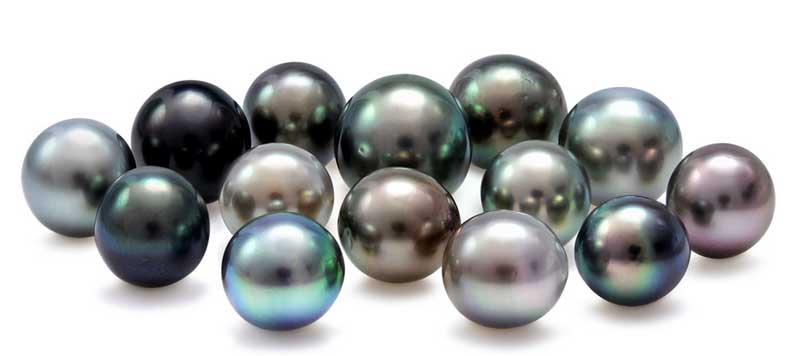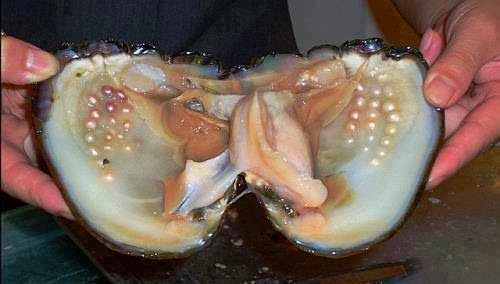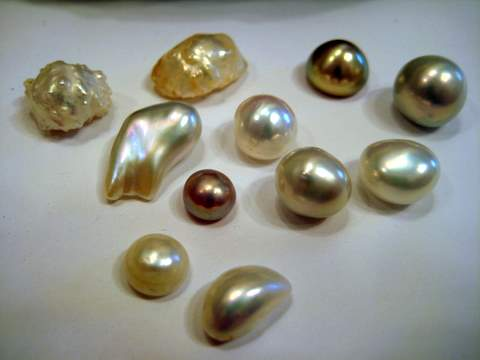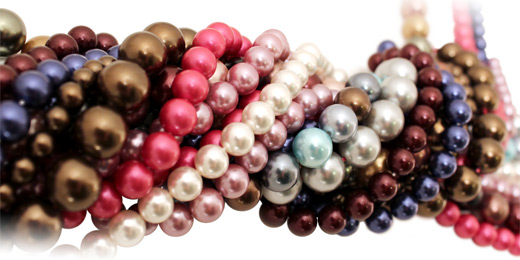Today, pearls are regarded as both classic and contemporary, coming in many more fashionable styles than your grandmother’s traditional strand of pearls.
Learning about types of pearls is important when adding items to your jewelry collection.
Natural
A natural pearl is formed when a small irritant or parasite penetrates and lodges in the mantle tissue of a mollusk. In response, the “invaded” tissue secretes a protective substance called nacre, a combination of crystalline and organic substances that builds and eventuallyafter a few years develops into a pearl. Natural pearls are rare and require serious persistence to find.
Cultured
A cultured pearl results from the process by which a pearl farmer induces pearl formation by inserting an irritant into the mollusk and then “cultivating” the pearl. Cultured pearls are real pearls that were not formed by accident of nature. Most pearls sold today are cultured. Note: Edible oysters do not produce nacre and thus do not produce pearls, so there’s no need to put them through an MRI before eating.
Freshwater
Freshwater pearls come from oysters that mature in non-saline water (from lakes or ponds, as opposed to saltwater from the sea). Freshwater pearls usually are not as round as saltwater pearls and therefore less expensive. However, the past two decades have seen a huge increase in their quality for a number of reasons, but mostly because in the mid-1990’s the pearl-farming industry changed the type of mussels they used and lowered the number of grafts inserted in the mussel, and thereby the number of pearls produced. Freshwater pearls today are a favorite of jewelry designers because of their lower cost and improved quality and availability.
Shell Pearls
Shell Pearls are made from the inner lining of oyster shells, also known as Mother of Pearl. The substance is ground to a fine powder, shaped, dyed and coated with natural pearl nacre and then a protective coating to give it lustre. Shell pearls, like most everything, vary in quality but may be quite beautiful and much less expensive than saltwater pearls. In addition, the industry’s strict quality control ensures shell pearls will keep their color and shine and will not be affected by sweat and perfume. Indeed, they are more durable than cultured and freshwater pearls.
Okay...so how do you tell them apart?
Well, the EASIEST way is the price, because even wholesalers can't get Tahitian or South Sea Pearls for the ultra-reasonable amounts these man-made Sea Shell Pearls are being sold for. However, smarter sellers are charging higher prices, figuring to fool the buyer into thinking they are getting some $10,000 pearls for only $100.
Real Tahitian Black Pearls are expensive... price tag for a nice strand is a cool $14,900.
Another way to tell if the pearls are real or man-made is the color. Natural pearls don't come in electric blue, vivid pink, or apple green. Pearls can be dyed, of course, but no one in their right mind would think of dying a string of pearls worth thousands of bucks! Real pearls come in the color of the nacre that the oyster or mussel produces...usually white, dark silver, teal/peacock, light silver, gold, grey, or white with overtones of blue, pink, or silver.
A little extra technical information:
Tahitian Black pearls come from the black-lipped oyster, ( Pinctada margaritifera) in the islands of French Polynesia. The oyster itself is quite large -- sometimes over 12 inches across and weighing as much as 10 pounds -- which often results in much larger-than-average pearls. The pearls are unique because of their natural dark colors.
South Sea pearls come from the oyster called Pinctada Maxima. There are two varieties of Pinctada maxima: the silver-lipped and the gold-lipped. The two are distinguished by the coloration of the outer edge of the interior. Hence, the lovely silver and gold coloring of the pearls. These oysters grow up to 12 inches in diameter, and can be nucleated with a much larger bead than other saltwater oysters such as the Akoya. Hence, the huge size of South Sea Pearls!





